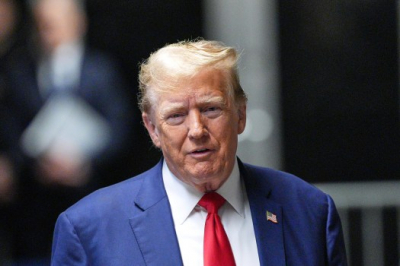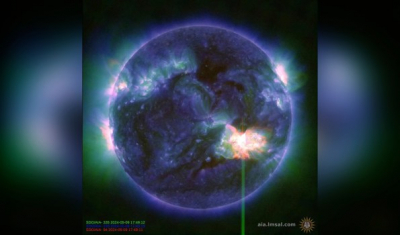Hayao Miyazaki: Pioneering the Art of Animated Storytelling
Early Life and Career:
Hayao Miyazaki, born on January 5, 1941, in Tokyo, Japan, is a visionary animator, director, producer, and co-founder of Studio Ghibli, one of the most influential animation studios globally. Miyazaki's childhood was shaped by the aftermath of World War II, an era that deeply influenced his later works.
After studying political science and economics at Gakushuin University, Miyazaki joined Toei Animation in 1963. His early career involved working on various projects, including the iconic "Puss in Boots" (1969) and "Future Boy Conan" (1978), where he honed his skills and developed a unique approach to storytelling.
Founding Studio Ghibli:
In 1985, Miyazaki, along with fellow animator Isao Takahata, co-founded Studio Ghibli, a studio that would redefine the landscape of animation. Ghibli's first feature film, "Laputa: Castle in the Sky" (1986), marked Miyazaki's directorial debut within the studio and showcased his penchant for blending fantasy, environmentalism, and compelling characters.
Themes and Style:
Miyazaki's works are characterized by richly detailed animation, complex characters, and thematic depth. His storytelling often explores themes of environmentalism, pacifism, feminism, and the complexity of human nature. Films such as "My Neighbor Totoro" (1988), "Princess Mononoke" (1997), and "Spirited Away" (2001) have become iconic for their profound narratives and stunning visuals.
The director's distinctive artistic style emphasizes hand-drawn animation, a rarity in the age of digital filmmaking. Miyazaki's commitment to traditional animation techniques reflects his dedication to the craft and contributes to the timeless quality of his films.
Global Impact and Recognition:
Miyazaki's impact extends far beyond Japan. His films have garnered international acclaim, earning him a dedicated global fanbase. "Spirited Away" notably won the Academy Award for Best Animated Feature in 2003, introducing Miyazaki's work to an even broader audience.
In 2013, Miyazaki announced his retirement, but in 2016, he came out of retirement to work on a new feature film. His commitment to storytelling and the power of animation remains unwavering, inspiring new generations of animators and filmmakers.
Legacy:
Hayao Miyazaki's legacy is not only as a master animator but also as a storyteller who transcends cultural boundaries. His ability to capture the imagination and touch the hearts of audiences worldwide has solidified his place as a cinematic legend. Miyazaki's impact on animation continues to be felt, as his films remain timeless classics that resonate with viewers of all ages.
Hayao Miyazaki, a luminary in the world of animation, has left an indelible mark on the cinematic landscape. His visionary storytelling, characterized by intricate narratives and timeless themes, has not only redefined the possibilities of animated films but has also transcended cultural and linguistic barriers. The co-founder of Studio Ghibli, Miyazaki's commitment to hand-drawn animation and his exploration of profound societal and environmental themes have earned him global recognition and a dedicated fanbase.
Miyazaki's influence extends beyond the realm of entertainment, embodying the power of storytelling to evoke empathy and provoke contemplation. His films, ranging from the enchanting "My Neighbor Totoro" to the epic "Princess Mononoke" and the mesmerizing "Spirited Away," showcase a rare fusion of artistic brilliance and thematic depth.
As a cinematic legend, Miyazaki's legacy continues to inspire generations of animators, filmmakers, and audiences around the world. His return from retirement in 2016 signifies a continued dedication to his craft and a testament to the enduring impact of a storyteller who has captured the hearts and imaginations of millions. In the ever-evolving landscape of animation, Hayao Miyazaki stands as a beacon, reminding us of the enduring magic that lies within the art of animated storytelling.
Hayao Miyazaki has been prominently featured and mentioned in various books, films, documentaries, and websites that delve into the world of animation, particularly Japanese animation (anime). Some notable references include:
•
Books:
• "The Art of Spirited Away" by Hayao Miyazaki: A compilation of Miyazaki's sketches, concept art, and insights into the creation of the film "Spirited Away."
• "Starting Point: 1979-1996" by Hayao Miyazaki: Miyazaki's own writings, including essays and interviews, providing a glimpse into his creative process and thoughts on animation.
•
Documentaries:
• "The Kingdom of Dreams and Madness" (2013): A documentary that follows the inner workings of Studio Ghibli, featuring Hayao Miyazaki, Isao Takahata, and the studio's staff during the production of "The Wind Rises" and "The Tale of the Princess Kaguya."
•
Films:
• "Never-Ending Man: Hayao Miyazaki" (2016): A documentary film that explores Miyazaki's life and career, capturing his return to animation after announcing his retirement.
•
Websites:
• Studio Ghibli's Official Website: Regularly updated with news about Miyazaki's projects, exhibitions, and announcements related to Studio Ghibli's work.
• Various film databases and animation-focused websites often feature articles, reviews, and analyses related to Miyazaki's films and contributions to the animation industry.
•
Academic Journals:
• Miyazaki's impact on animation and storytelling has been a subject of academic study, and various journals and scholarly articles discuss his influence on the global animation landscape.
These references contribute to a comprehensive understanding of Hayao Miyazaki's artistic legacy, creative process, and the profound impact he has had on the world of animation.






